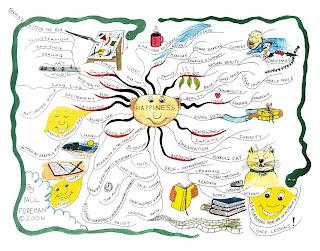Random word/image association is an idea generation method that applies a systematic way with a fixed formula to garner new ideas. It provokes and intrigues our mind to react, resulting unorthodox solutions and concepts.
This technique can be used to stimulate open and divergent thinking and seek creative new ideas. When you are running out of ideas, this is the one of the best ways to acquire your lost sense of creativity. With some practice, even the most conventional people who rely on logic and analytical thinking can produce genius creativity.
For this lesson, our task was to create an image/object that will instill fear amongst people. We are given a random word - cat - to carry out random word association.
Here is a mini mind map of my ideas:
With the word "cat", i am reminded of four main characteristics:
i) claws - Cats have nasty claws which they sharpen by scratching on carpets, wood planks etc. It is one of their important self-defense tools and they can climb steep objects easily.
ii) fish - Cats in cartoons are always portrayed eating fish, but the real reason is unknown. In reality, cats feed on many other types of food. This is a much stereotypical judgement of a cat.
iii) night vision - Felines have very good night vision because they are nocturnal animals. They often hunt in the night (that includes big cats like the tiger) and laze around, taking long naps during the day.
 |
| Click to enlarge. Yes, that's a finger in her mouth. |
Fish: What's a scary fish? A man-eating fish, that is! Piranhas are one of the omnivorous species of fish in the world that consumes large amount of meat. They have sharp teeth and a big appetite for human flesh. What are the chances you'll survive in the middle of a river with a school of piranhas? Thank goodness most of them only exist in the Amazon basin.





















